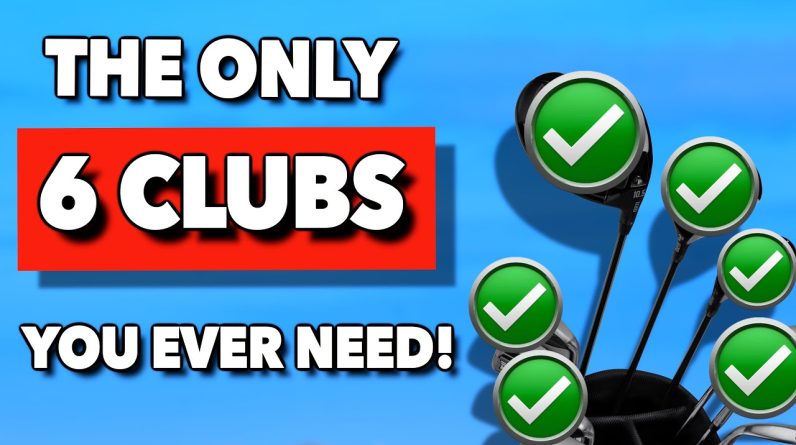Rules of Golf Explained (2023): Unplayable Ball
What Does “Unplayable Ball” Mean in golf?
In golf,encountering an unplayable ball is a frustrating scenario many players face. according to the Rules of Golf 2023, a ball is declared unplayable when a player determines that playing the ball from its current lie is impractical or would cause undue difficulty or risk of damage to the club or the course. This self-assessed ruling allows golfers to take relief with penalty strokes, helping maintain the pace and fairness of the game.
When Can You Declare a Ball Unplayable?
The key feature of the unplayable ball rule is that a player may declare their ball unplayable anywhere on the course except when the ball is in a penalty area (water, lava, or other hazards marked with red or yellow stakes or lines). There is no need for a referee or rules official—the player makes the decision based on their judgment.
- Ball embedded in thick rough or roots.
- Ball lodged against an immovable obstruction, like a sprinkler head or cart path.
- Shot lands in an awkward or dangerous location (e.g., under dense bushes, behind trees).
- Lie is unfavorable to a degree that playing the ball properly is unrealistic.
Options After Declaring an Unplayable Ball (Rule 19)
Once you declare your ball unplayable, you have three relief options available under Rule 19, each with a penalty of one stroke:
| Relief Option | Description | Penalty Strokes |
|---|---|---|
| Stroke-and-Distance Relief | Play a ball from the original spot where the previous stroke was made. | 1 stroke |
| Back-on-the-Line Relief | Drop the ball anywhere on a line going back from the hole through the spot of the original ball’s position. | 1 stroke |
| Lateral Relief (Within 2 Club-Lengths) | Drop the ball within two club-lengths of where the original ball lay, but not nearer the hole. | 1 stroke |
Note: You cannot take lateral relief if the ball is in a bunker. In a bunker, only the stroke-and-distance or back-on-the-line options apply.
Penalty for Declaring an Unplayable Ball
Declaring your ball unplayable automatically adds a one-stroke penalty. This is crucial to balance the benefit of relief with the challenge of starting again from a different position.
- You add one penalty stroke to your score.
- Your next shot comes from the new location you have chosen according to the relief options.
- The relief options aim to provide a fair second chance without unduly penalizing or benefiting the player.
Common Misconceptions About Unplayable Balls
- Myth: You can declare a ball unplayable anywhere on the course without penalty.
Fact: Declaring unplayable always costs one stroke.
- Myth: You must get a ruling before declaring a ball unplayable.
Fact: The player can decide on their own as it is a personal judgment.
- Myth: you can take lateral relief anywhere.
Fact: Lateral relief is not allowed in bunkers.
- Myth: If ball is lost in a hazard, you can declare unplayable.
Fact: no. Penalty area rules apply for balls in hazards, not unplayable ball rules.
Practical Tips for Handling Unplayable Balls on the Course
- Visualize Your Options: Before declaring your ball unplayable, carefully consider if it’s better to try to play the ball rather than take a penalty stroke.
- Know Your Clubs: When dropping behind the ball, use clubs you’re comfortable with to save strokes.
- Mark Your Spot: Always mark precisely where your unplayable ball lies to ensure you drop your relief ball legally.
- Consult the Rules: Carry a fast reference of the Rules of Golf, either a card or an app, to check situations for confidence.
How Declaring an Unplayable Ball Affects Your Score
The penalty stroke and relief shot add to your hole score, but this can be far better than attempting a risky shot that coudl result in a lost ball or worse lie. As a notable example,if your ball is stuck under thick bushes,declaring it unplayable might save you from adding two or more penalty strokes.
| Scenario | Without declaring Unplayable | Declaring Unplayable |
|---|---|---|
| Ball stuck under bush | Stroke + Lost ball penalty (2 extra strokes) | 1 penalty stroke + ball dropped in better lie (perhaps fewer strokes) |
| Ball close to water, risky shot | Stroke + possible penalty for water hazard or lost ball | 1 penalty stroke + safer drop behind the ball to continue play |
Case Study: Pro Golfer applying the Unplayable Ball Rule
At the 2023 U.S. Open, pro golfer sarah thompson found her ball deeply embedded in thick rough close to a cart path. Rather of attempting a challenging shot through roots and risking damage to her club, she declared the ball unplayable, took a one-stroke penalty, and dropped the ball back on the line behind the difficult lie.
This smart decision preserved her composure, allowing her to make a clean shot and ultimately finish the hole with a respectable score, demonstrating the strategic use of the unplayable ball rule in competitive golf.
Frequently Asked Questions (FAQs)
- can I declare my ball unplayable in a water hazard?
- No.If the ball is in a penalty area,the unplayable ball rule does not apply. You must proceed under the penalty area rules.
- Do I have to announce to my playing partners when I declare the ball unplayable?
- While not mandatory, it’s good sportsmanship and often required in competitive play to announce your intent.
- Does the unplayable ball rule apply on the putting green?
- No. If your ball lies on the putting green and is unplayable, you must lift and place the ball according to green-specific rules without penalty.







